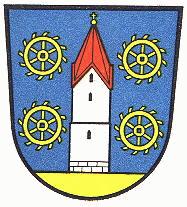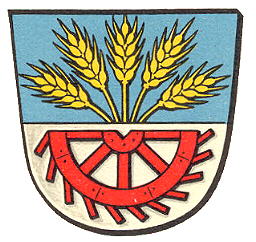Weiskirchen (Rodgau): Difference between revisions
Knorrepoes (talk | contribs) No edit summary |
Knorrepoes (talk | contribs) m (Text replace - "|width="15%"|50 px|right |}" to "|width="15%"|50 px|right |}<seo title="Wappen, Gemeindewappen" />") |
||
| Line 3: | Line 3: | ||
|width="70%" align="center" |'''Heraldry of the World<br/>Civic heraldry of [[Germany]] - [[Deutsche Wappen|Deutsche Wappen (Gemeindewappen/Kreiswappen)]]''' | |width="70%" align="center" |'''Heraldry of the World<br/>Civic heraldry of [[Germany]] - [[Deutsche Wappen|Deutsche Wappen (Gemeindewappen/Kreiswappen)]]''' | ||
|width="15%"|[[File:Germany.jpg|50 px|right]] | |width="15%"|[[File:Germany.jpg|50 px|right]] | ||
|} | |}<seo title="Wappen, Gemeindewappen" /> | ||
Revision as of 18:48, 5 November 2012
| Heraldry of the World Civic heraldry of Germany - Deutsche Wappen (Gemeindewappen/Kreiswappen) |
WEISKIRCHEN
State : Hessen
District (Kreis) : Offenbach (until 1973 Hanau)
Incorporated into : 1977 Rodgau
Official blazon
Origin/meaning
The arms were granted in 1958 and show the canting white tower (Weis=white, Kirche=church) between four water mill wheels. The wheels represent the former water mills in and around the village.
In 1955 other arms were proposed, with in the upper half five golden wheat ears and in the lower half a wheel (see below). The ears should represent the agriculture in the area. This proposal was based on a 17th century seal and 15th century engravings in the local church. These show in the upper part two hooks and in the lower part a wheel. The hooks were probably a sign of the local masonry, which were later seen as a village symbol.
Literature : Stadler, 1964-1971, 8 volumes; Hessisches Wappenbuch, 1956


